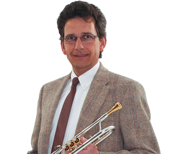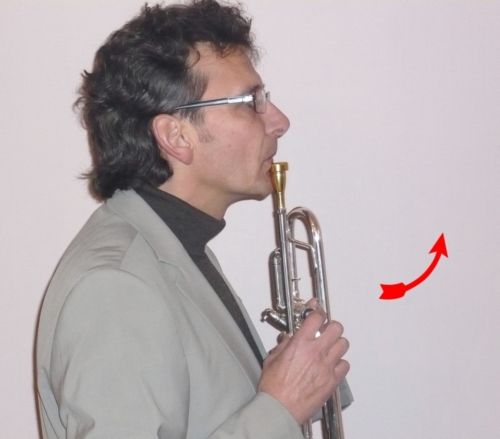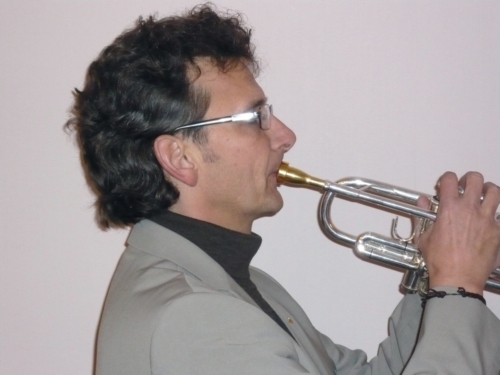Tips and basic aspects
To be honest, don’t you sometimes wish your former teacher or professor was there to assess how you are doing? Wouldn’t it be high time to have someone you trust appraise your abilities?
In most cases, this is no longer possible, because your favorite trumpet teacher is no longer available.
The ultimate goal of a solid education needs to be to turn pupils into autonomous musicians, capable of checking and improving their musical and technical performances. Theorems and test criteria are important tools that help us stay up to date based on constant self-diagnosis.
In my previous article, "Practical exercises", I suggested working with a checklist. A hobby pilot, I’ve had to learn to control my everyday-life routine with this tool to avoid negligence and carelessness. The parallel with music is quite obvious, because both occupations require constant care and precision. The "human factor" with all its pitfalls needs to be confined as much as possible. You too can prepare a checklist to avoid errors sneaking in.
Let us have a look at the areas where long-term changes may creep in unnoticed.
The embouchure position: horizontal and vertical
Without actually noticing it, quite a few players are guided by the proportions of their instrument. A trumpet, for instance, is fitted with valve slides (bell pipe and mouthpipe-cum-mouthpiece). This causes them to consider that the pistons are at the center of their instrument. As a result, the embouchure slides towards the right, because the mouthpiece is located right of center.
Vertical embouchure position:
I recommend checking the vertical embouchure position, because the air flow and lip vibrations (and hence the tone quality) are determined by the right upper/lower lip proportion in the mouthpiece. Applying standard rules to such highly individual aspects as the lips is simply a no-no. The following exercise should help you find the right embouchure position:
Embouchure exercise for trumpet players
Hold the instrument vertically, hold the mouthpiece edge to your lower lip and blow straight into the mouthpiece. As soon as the "airy" noise turns into a fat sound, lift the entire instrument horizontally. You have found the correct embouchure position, because the air can flow freely. Instead of squeezing the lower lip, the mouthpiece edge should leave it enough freedom to transport the air (like a ski jump).
Mouthpiece exercises for trumpet players
Those who consider embouchure exercise the basics of playing a brass instrument will feel tempted to say "back to the roots". It is probably safe to say that all professors and teachers encourage you to include these exercises in your warm-up cycle. Still, most of us tend to forget about them after a while, which is a pity because working with the mouthpiece often helps you avoid embouchure problems. Playing with the entire instrument is often way easier than producing clear and perfectly pitched notes with just the mouthpiece. I therefore urge you to start practicing with your mouthpiece again.
Reading suggestions: "The buzzing book" by James Thompson.
Tone preparation
Preparing for the first note after a break is important for your self-confidence. Typical rehearsals and concerts tend to become so hectic that one forgets to focus on this important stage. That is why players should rely on a fixed ritual to maximize their chances of hitting the first note of each series spot-on. Preparing for the next note also helps you relax.
- Press the piston ahead of time
- Breathe in, in time with the tempo (e.g. 2~3 quarter notes before the note in question. Indispensable for difficult passages!)
- Don’t open your mouth unnecessarily while breathing in (breathe through you nose or mouth angles).
- While breathing in, prepare your lips for the upcoming note. This will allow you to correct the position if need be.
- While breathing in, shape your tongue in accordance with the pitch you are about to play;
again, this allows you to make corrections, if necessary.
- "Think" or "imagine" the note you are about to play.
Breathing and sound quality
Intense and controlled breathing is something one has to practice consciously lest it should degenerate into a superficial action. We need to be aware of the fact that the way in which we breathe in necessarily affects the air flow and pitch control. Breathing is important and should therefore be taken seriously (not least because it helps one stay alive).
Yet, there is no need for lengthy theories about breathing: just try to feel the pleasant sensation of the cool air flowing past your nostrils, or to smell the air you are breathing. Such actions are far more effective than lengthy theoretical explanations.
About tone quality
Certain musicians have come to live with their tone as is, accepting wind noises and other flaws without even thinking about them.
That is not a good idea. Listen to your yourself, be honest about what you hear and try to improve it. The following exercise may help you with that:
Play softly in front of a wall or a mirror and pay attention to everything only sound engineers in recording studios seem to notice.
Extreme pianissimo and fortissimo
Would you agree that you tend to play the bulk of your exercises mezzo forte or even forte? Hardly anybody seems to practice pianissimo passages. I encourage you to play certain exercises as softly as possible, because that will help your precision and accuracy.
Extreme fortissimo should be practiced sparingly, not least because it is rather tiring. But do not leave it out"”you need to practice it at some point. Practicing at extremely low and high levels also helps you take stock of your musical abilities.
In conclusion
Self-diagnosis and keeping track of your abilities is important for your success. Try to be as objective as your teacher and never ever stop practicing and trying to improve. Just remind yourself of your idea of an ideal sound.
This reminds me of a brilliant quote by George Bernard Shaw about brass players and practice:
"Don’t encourage wind musicians. It will only strengthen their lungs and prolong their lives."
Have fun and all the best!




